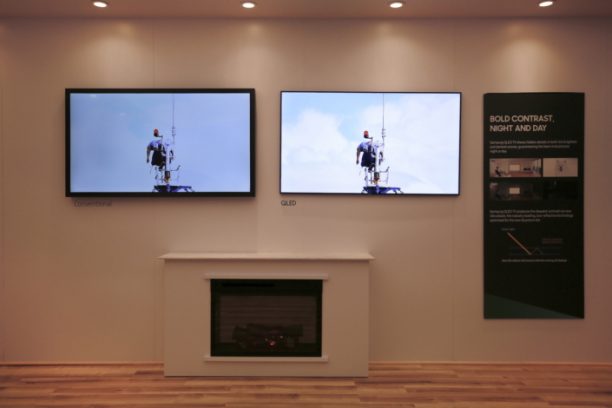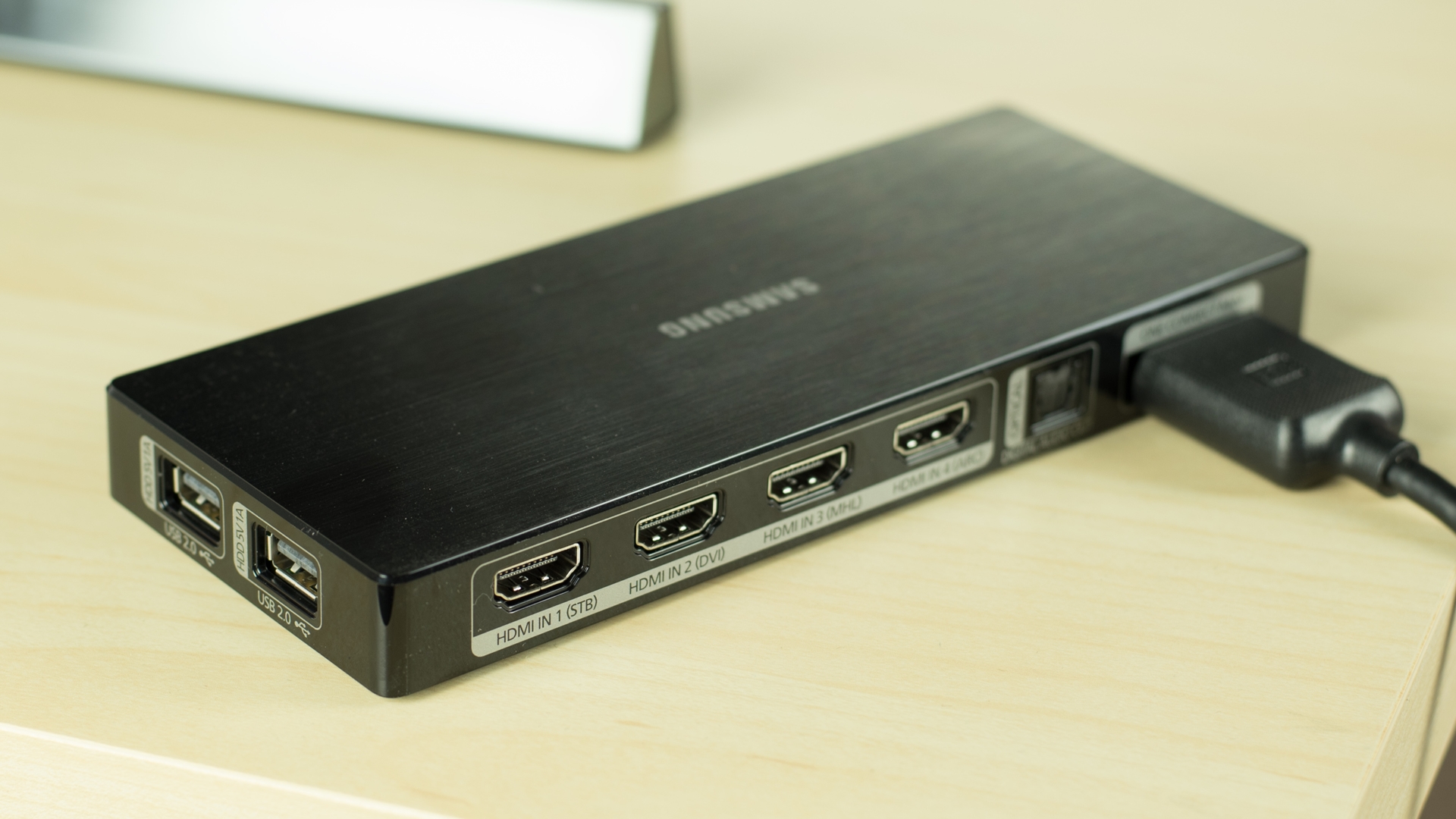During CES 2017, we show over a little of the new tvs from Samsung with technology, QLED, which promise to be the pinnacle of technology in the displays in 2017. Despite still being a little ways away from release (should arrive near the middle of the year in Brazil), we spoke with representatives of Samsung to know a little more about the new appliances.
In conversation with João Rezende, executive director of the brand in Brazil, we had a little more detail of the models Q8 and Q9, which are both found in the CES this year. The representative told us about the new technology, QLED, the features of the One Connect and the new design of the TVs. Check out:
QLED is the future of tvs?
When you talk about tvs current models that most stand out are two: models with OLED screens and products with technology of quantum dots. The QLED is an evolution of the models in 2016 from Samsung, bringing much more color fidelity, brightness, and contrast, in addition to enhanced features, such as the HDR.
To explain it in a way raw and summarized: the technology QLED transmits images in a way insanely close to reality. Ok, it seems the phrase of the slogan of all the appliances of the past two decades, but why this time is different? The large balcony is the brightness of the display, which is very high.
 The high brightness is one of the great balconies of the QLED
The high brightness is one of the great balconies of the QLED
If you have an LCD TV or even LED, you should have noticed: if the brightness is too high, the image gets "washed out", is not the same? It is completely off, compromising the final quality. Good, this is what the models Q8 and Q9 stand out. To give an example of comparison: TVs OLED, ultra high performance reach only 600 nits (nits is the measurement of brightness), while the Q8 has 1.5 thousand nits, and the Q9 has 2 thousand nits.
The high brightness is particularly good for other features of the TV, such as the HDR
In other words: the color fidelity is maintained even with brightness levels very high. Whether in bright environments or on dark, the images are stunning. In the example below, you see to the right a television QLED and a conventional side-by-side. João Rezende mentioned that during the CES 2017, a camera 4K filming everything and transmitted in real time to two TVs: a QLED and the other conventional, and the device with the new technology seemed to be a window so vivid.
 The model with QLED is on the right
The model with QLED is on the right
The Samsung want to bet on that technology also for the durability of the quantum dots. John explains that, although the OLED to have a good quality (and black levels very good), this is a device that relies on a organic component that, with time, will be degrading and losing quality. On the other hand, the consumers exchange the TV every five or six years (sometimes more), something that does not fit the products with QLED.
The screens OLEDs are good for the mobile, in which the display is a long time off, but not to display larger
A control for all control
One of the interesting features of the new models presented at CES 2017 is the possibility of controlling everything that is connected to the TV with a single control. Some tvs of the Samsung 2016 already had the feature, called One Connect, to connect all video inputs into a single HUB.
Now, this connector is generally connected to the device by a fiber optic cable, bringing even more speed of data transmission. The One Connect automatically detects which type of device is the HDMI port, such as set-top boxes for cable TV, video games, Home Theaters and much more, and renames the input according to each one, all done automatically.
The best part is that you can leave the HUB and all other devices hidden in your living room, since the control only of the account of everything. In other words, they can stay up in another room or inside a drawer, for example, without cables passing out or requiring that you hide behind the panel of the TV, for example.
connectivity smart is something that Samsung also wants to focus (since the 3D is a technology that is dying). The televisions will come equipped with the operating system Tizen, and a number of shortcuts in the interface, such as on Netflix, that in three clicks able to return to the last content you were watching. In addition, various apps and content on smartphones and tablets can be shared on the TV through an application.
 One Connect
One Connect
Design in essence
The above is directly associated with the design of the device, which is one of the highlights that Samsung wants to give the models Q8 and Q9. As we showed at the time of the CES, are devices extremely thin (so thin as mobile phones). And this is not by chance, that is, to show that it is possible to fine-tune the tvs.
The major purpose here is to implement the "zero gap", or in easier explanation, make the gap in between the wall bracket and the TV is almost nil, giving an aspect of a living picture to the environment in which it is located. If you choose, it is also possible to place the TV on a stand that resembles the canvas of a painting, making it more an analogy to the "work of art".
Both of the tvs come with the infinity edge, nomenclature for thin edges and give the impression of not having the frame some. The version Q8 has a screen corner, everything to make the device even more attractive to the eyes (and we’re not talking about images).
Ok, but how much goes out the joke?
Truth be told, probably these TVs (Q8 and Q9) are not for me or for the greater part of the brazilian consumers. With so many features, cutting-edge design and new technologies, the products are directed to the class A. that is, wait for prices much high. For now, the devices still do not have dates to get to Brazil, but is estimated to be in the middle of the year.
And how are people like me, who will not have the purchasing power for that type of device? The great advantage of the new rows arrive on the market is that part of the new technologies has a process of cascading, that is, they are batting for the intervening lines, and even entries.
Probably, the models will be as well expensive, but part of that technology should be leveraged in the company’s other products
During the chat I had with João Rezende, the executive said that it is likely that various features of the line QLED reach out to the other tvs in 2017. But don’t be sad: if your dream of consumption is a TV with the new feature of image, it is quite possible that models of this style to become cheaper in the future, because Samsung really believes that is the next trend when the subject is flat.
No comments:
Post a Comment